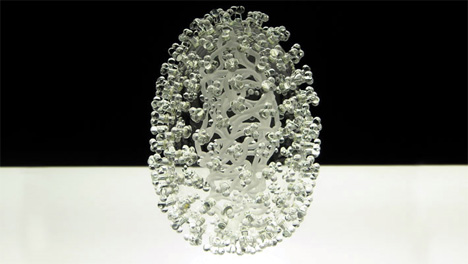
Most of us have seen the brightly-colored scientific images of viruses and germs. And if we think about it, we realize that the real things are probably not as visually interesting as these images would have us believe. But the typical person doesn’t think about these things often. Luke Jerram is not the typical person.


Jerram, a multi-disciplinary British artist, wondered if the public’s perception of diseases would change if the publicly-available images of them were to change. He worked with numerous specialists – from virologists to glassblowers – he created these incredible 3D images of the microscopic invaders which often make our lives difficult. Above are two representations of the H1N1 (swine flu) virus.


The “Glass Microbiology” series points out the fragile beauty of the things that harm us. But these pieces offer no sympathy; only a colorless, unemotional view of biological organisms. Jerram, who happens to be colorblind, wondered if there were coloring conventions for those scientific images we often see depicting various viruses. Some are colored for scientific reasons, but some are colored only for aesthetic purposes. He wanted to know if the public perception of a virus could be swayed simply by swapping colors to make it appear more friendly or more deadly. Above: SARS and smallpox.


By removing color entirely, the artist manages to bring the eye to the composition of each virus. More than just scientific study guides or things of beauty, they inspire viewers to truly consider the impact each pathogen has on humankind, and the relationship between the pieces’ beauty and their somber meaning. Above: HIV and e. coli.

Each piece is roughly one million times actual size. Jerram has run into problems with some viruses: they simply can’t be re-created in glass. Their composition would cause them to collapse under their own weight. In addition to exploring the relationship between these deadly organisms and their exotic appearances, Jerram is exploring the very tangible relationship between scientific knowledge and artistic possibilities. Above: “untitled future mutation.”

